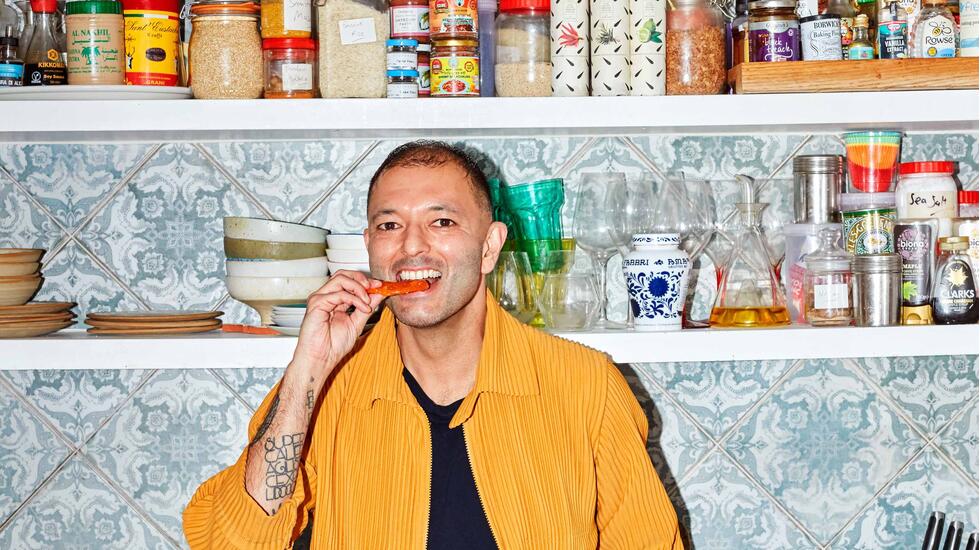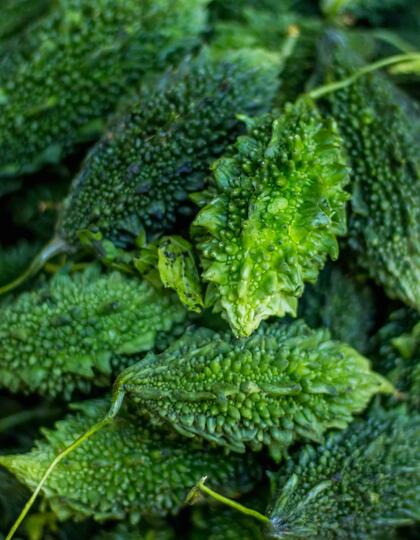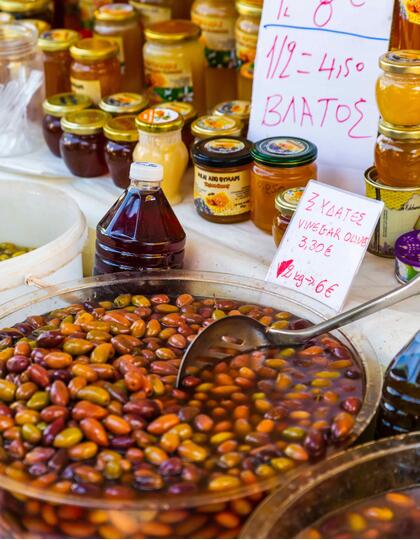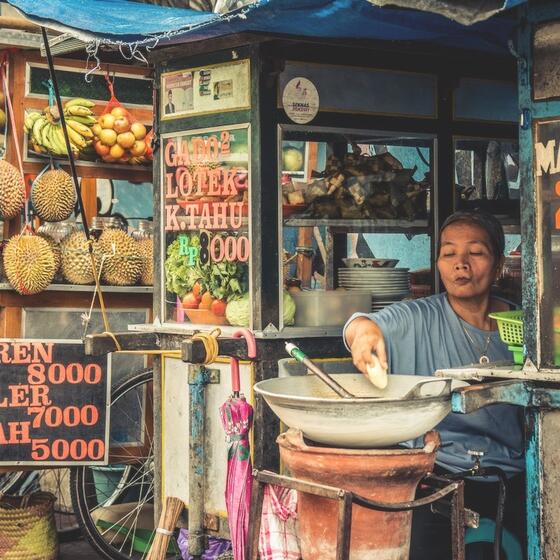The food writer, whose debut cookbook Mother Tongue is out now, talks Indian supermarkets, culinary identities, and boldly flavoured fried chicken sandwiches
21 March, 2023

Gurdeep
Loyal answers the phone after enjoying two lunches. The
first, a Calabrian chilli pulled pork, was a test recipe for a food
magazine that had him dipping into the pan as he cooked. The second
was a simple soft-boiled egg sandwich – a Loyal take on old-school
egg and soldiers.
Twisting up traditional dishes is something of a signature
kitchen move for the food writer, who has just published his first
cookbook. Mother Tongue: Flavours of a Second Generation
is a creative collection of recipes intertwining Loyal’s British
and Indian heritage with the flavours and ingredients he’s
encountered through work, travel and the kitchen tables of his
friends. Mixing up Punjabi spices with British roasts and Japanese sandwiches, the recipes are as
vivid as the book’s neon-pink, paisley-patterned cover. Even the
intellectual introduction – which smartly opines that preserving
food culture should be a fluid, ever-changing process – is anything
but pious. The writing is as warming as the cooking itself, which
includes iterations of curried roast chicken, black pepper-roasted
strawberries and saffron-infused custard tarts.
Here, Loyal chats about his signature cooking style, how travel
can shape our palate, and why visiting a local Indian supermarket
will open up a world of new flavours.
I was born in Leicester into a very big Punjabi family. I’m a
second-generation British Indian, and for any Punjabi, food is the
rhythm of our lives.
I’ve always been interested in the idea that as a
second-generation British Indian immigrant, I’m an amalgamation of
my mum and my dad, but also myself, by being British by birth.
When I’m at home, or I’m cooking for friends, I mix up all the
flavours of everything I’m encountering in the world and pair it
with my own British Indian identity. My friends used to say, “why
don’t you write about this?”, so I did.


Gurdeep Loyal, left, and bitter gourds for sale in a British
Indian food store. | Photo credit: Matt Russell
It’s incredible to look back at people’s heritage through food,
but I’m more interested in what is happening now. What’s the next
step? What’s the next part of the story? When cuisine travels, what
happens to it? For my family, this cuisine travelled from India and
Punjab to Britain, and then I’ve taken it elsewhere and added to
it. This hybrid cuisine is an expression of my identity through
food. I’ve eaten my way around the world and discovered that there
are as many culinary narratives in the world as there are people,
and what’s exciting is to allow people to frame their own culinary
narrative via their own perspective.
I’m against the idea of there being culinary boundaries. People
will look at my cooking and say, “well, that’s not British food”,
or, “that’s not Indian food”, and I’ll say, “no, it’s British
Indian”. I call it third-culture cuisine. I am British and I am
Indian, and I am an amalgamation of both. I don’t feel people
should be locked into any ideas of authenticity because everyone’s
story – and their food – is authentic to them.
“Multicultural” as a word is often used as a checkbox exercise
in the food world. For me, the idea of a concept being
intercultural is more interesting – it has more depth, and it’s
about cultural exchange. In my book – and with my cooking – I want
to encourage people to get out to the diaspora-run food stores in
their community, whether it’s an Indian supermarket or a Greek
deli. I’ve got loads of friends who say, “there’s a Vietnamese
store at the end of my road and I don’t want to go in because I’m a
bit scared”, and I always say, “go in and see what’s there. I
guarantee you will come out with two or three things that will
amplify your pantry into 1,000 different directions”.


Guimarães, left, and a Cretan honey stall. | Photo credit:
Toms Auzins / Shutterstock.com
I often make the miso-masala fried chicken sandwich. Who doesn’t
love a fried chicken sandwich? The meat is marinated in a flavour
punch of a marinade that combines miso and loads of Indian spices.
A signature of my cooking approach is that you can put big flavours
with big flavours, and something quite extraordinary happens when
you do. It’s a global sandwich in its outlook, but it’s not
complicated or hard to understand – it’s a fried chicken sandwich,
but just a very, very loud one.
Between jobs at Innocent Drinks and food marketing at Harrods, I
took a year off to go travelling on a sort of culinary pilgrimage.
I spent time in America, in Europe and Southeast Asia. It was a
year-long adventure where I ate my way around the world. When I
travel, I do it with the intention of seeking something, and
discovering food producers that create a taste of the place.
Wherever you’re travelling, do a little bit of research into what
the area is known for and how you can access it. Chances are,
you’ll find an adventurous, worldly and exciting community of food
creators wanting to share their story.
One of my favourite places to travel is Greece, because when you
drive through the islands – Crete in particular – there are streets
lined with people selling whatever they’ve been growing or making
in their gardens, whether it’s local honeys or olive oils. For me,
an incredible way of seeing a place and getting to know a place is
through its taste.
There are some incredible food producers in Portugal – the town
of Guimarães is full of them. It’s a historic place where many of
the roots of Portuguese cuisine stem from. There’s a store there
that sells street snacks from a mountain cave.
And then India is full of so many different cuisines; you should
get off the beaten track to find them. So, visit Mumbai and Delhi,
but also go to places like Hyderabad, Pondicherry and Lucknow.
These destinations are even more exciting for me, because they’re
not as visited but they have completely unique culinary heritages.
Everyone has their own completely unique culinary story, and
it’s something that can be, and should be, added to. Look back at
your own family history and put that into your kitchen, and combine
it with what you experience. There is a wonderful joy in bringing
your travels into your kitchen and engaging with diasporic
communities wherever you live. Get out there and taste everything.
Mother Tongue: Flavours of a Second Generation (Fourth
Estate) is available from bookshop.org for £26.
Main photo credit: Matt Russell
